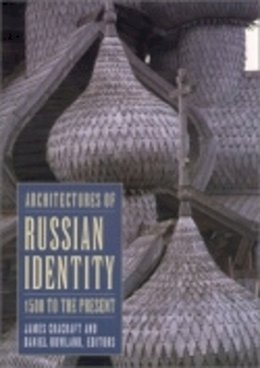
Stock image for illustration purposes only - book cover, edition or condition may vary.
Architectures of Russian Identity, 1500 to the Present
James Cracraft (Ed.)
€ 56.98
FREE Delivery in Ireland
Description for Architectures of Russian Identity, 1500 to the Present
Paperback. Editor(s): Cracraft, James; Rowland, Daniel. Num Pages: 272 pages, 79. BIC Classification: 1DVUA; AC; AM; HBJD; HBJF; HBJK. Category: (P) Professional & Vocational; (UP) Postgraduate, Research & Scholarly; (UU) Undergraduate. Dimension: 249 x 178 x 17. Weight in Grams: 558. 304 pages, 79 halftones. Editor(s): Cracraft, James (Professor of History and University Scholar, University of Illinois, Chicago, USA); Rowland, Daniel (Director, Gaines Center for the Humanities, University of Kentucky, USA). Cateogry: (P) Professional & Vocational; (UP) Postgraduate, Research & Scholarly; (UU) Undergraduate. BIC Classification: 1DVUA; AC; AM; HBJD; HBJF; HBJK. Dimension: 249 x 178 x 17. Weight: 558.
Read more
From the royal pew of Ivan the Terrible, to Catherine the Great's use of landscape, to the struggles between the Orthodox Church and preservationists in post-Soviet Yaroslavl—across five centuries of Russian history, Russian leaders have used architecture to project unity, identity, and power. Church architecture has inspired national cohesion and justified political control while representing the claims of religion in...
Product Details
Format
Paperback
Publication date
2003
Publisher
Cornell University Press
Number of pages
304
Condition
New
Number of Pages
264
Place of Publication
Ithaca, United States
ISBN
9780801488283
SKU
V9780801488283
Shipping Time
Usually ships in 7 to 11 working days
Ref
99-1
About James Cracraft (Ed.)
James Cracraft is Professor of History and University Scholar at the University of Illinois at Chicago. His books include The Petrine Revolution in Russian Architecture. Daniel Rowland is Director of the Gaines Center for the Humanities at the University of Kentucky and has published extensively on early modern Russian political culture.
Reviews for Architectures of Russian Identity, 1500 to the Present
This fascinating, highly rewarding book performs a pioneering role in our fast-growing studies of national identity formation. It adds the largely hitherto ignored element—architecture—in the creation of a self-image for the Russian state, its rules, and citizens.... This innovative and informative book is highly recommended, both for classroom instruction and individual enjoyment.
Elizabeth Kridl Valkenier, Columbia University
...
Read moreElizabeth Kridl Valkenier, Columbia University
...
